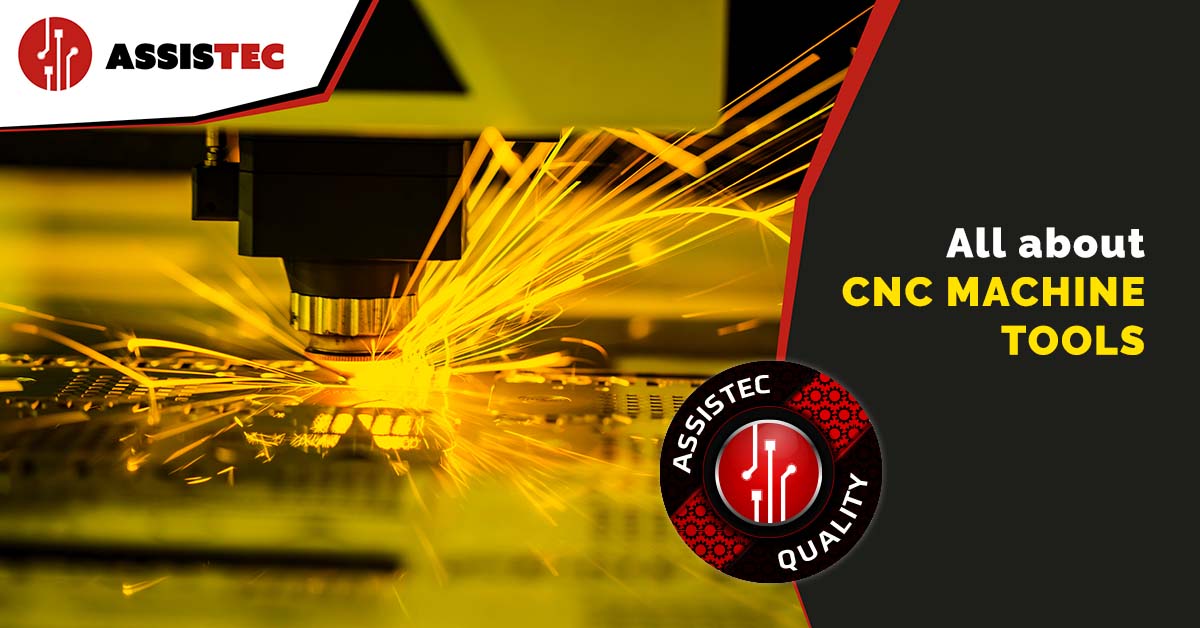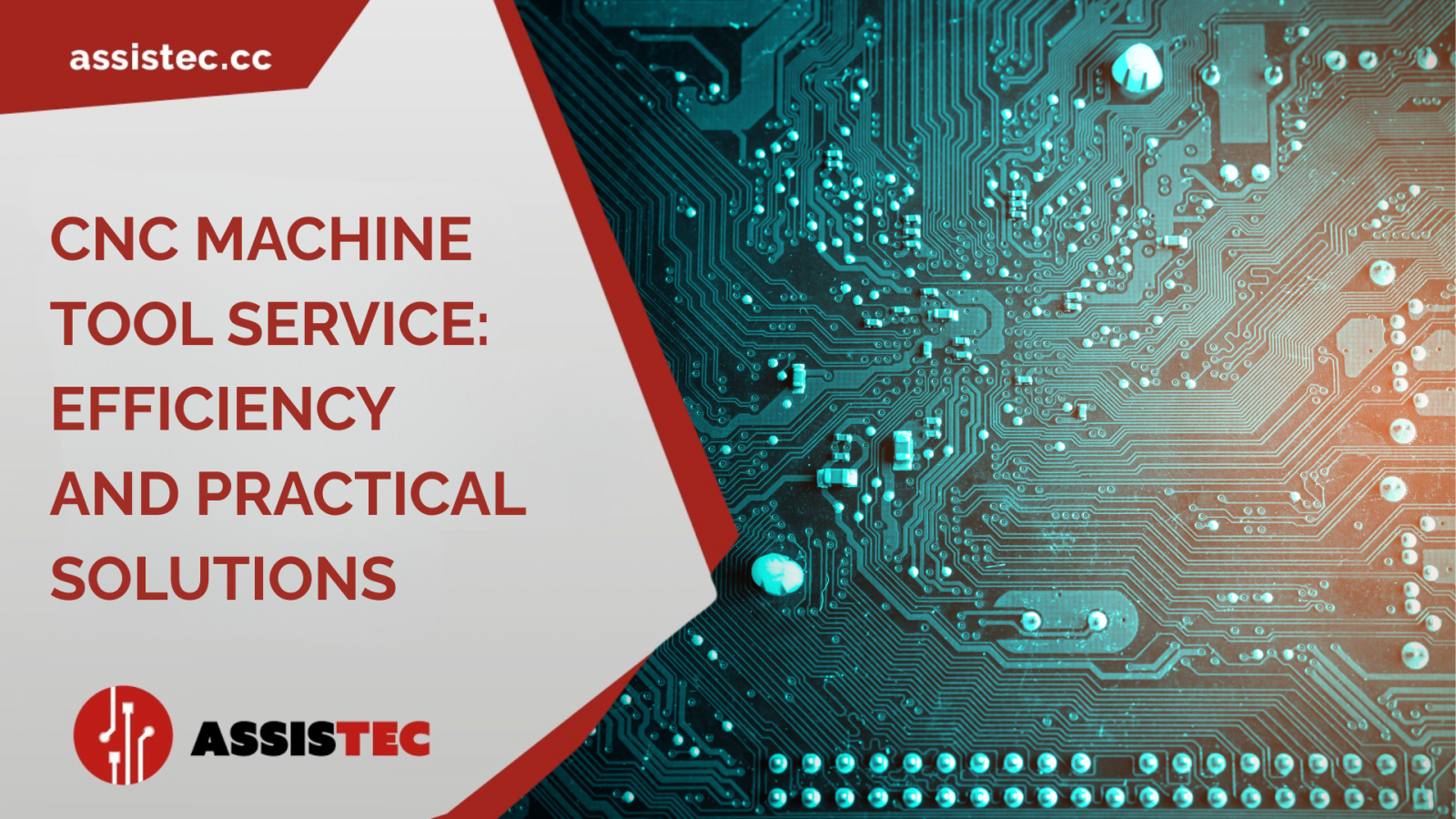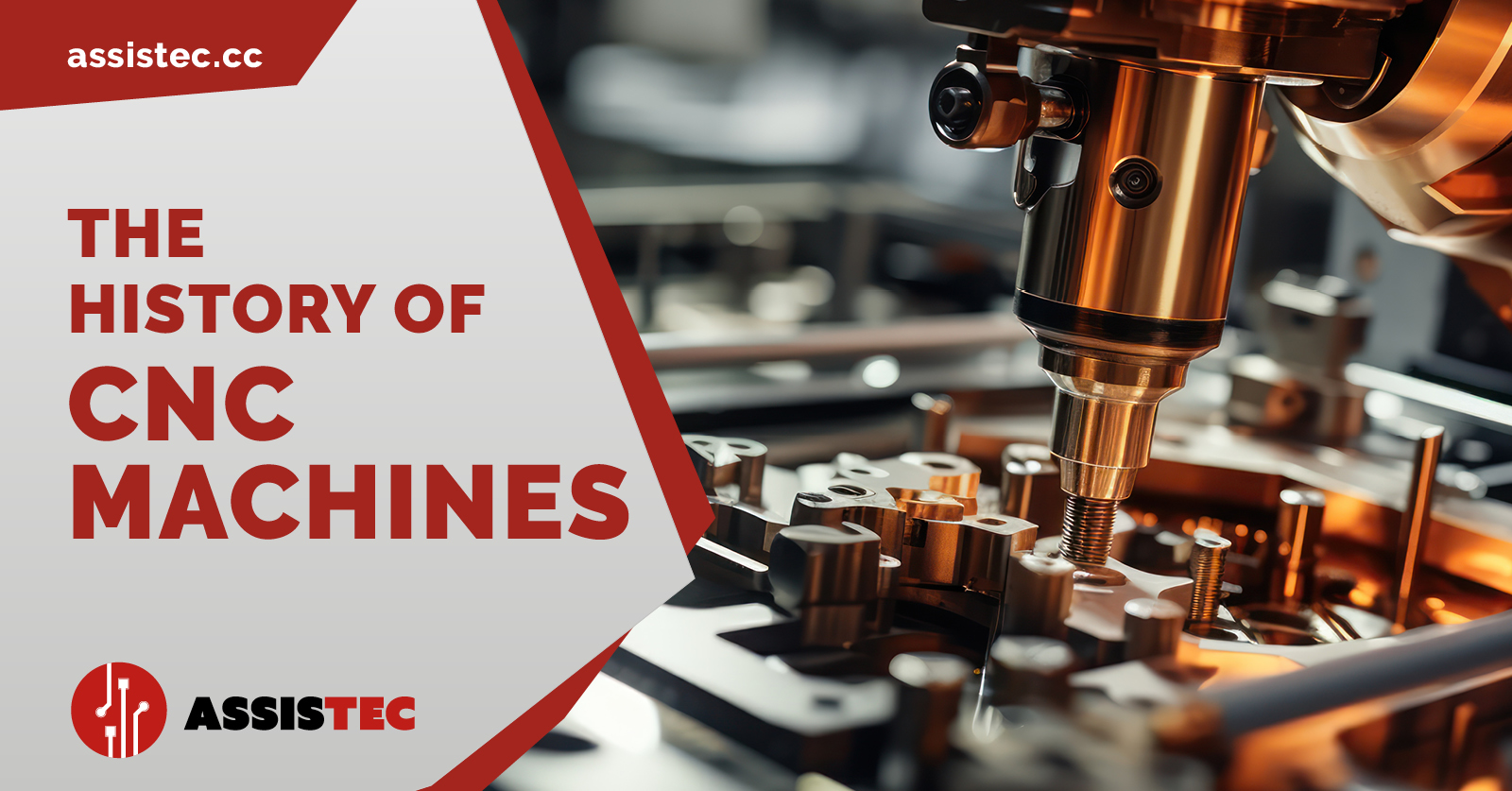CNC MACHINE TOOLS: WHAT ARE THEY AND HOW DO THEY WORK?

Computerised numerical control has forever changed the way industries work.

Perfect for performing high-precision, repetitive tasks and relieving humans of dangerous and tiring tasks, CNC machine tools are at the heart of the fourth industrial revolution, also known as Industry 4.0. Their use in smart factories increases productivity and reduces manufacturing times. Many people still confuse them with robots, but they are very different technologies. While robots are able to adapt autonomously to changes in the workflow, the movements of CNC machines are pre-set.
Every action is decided and controlled by means of integrated software. Hence the acronym “CNC”, i.e. Computerised Numerical Control. It is equipped with an internal digital device that makes it possible to memorise the functions performed during machining. Keeping track of the operations allows the machine to adapt to production requirements. Although it is not essential for its proper functioning, operator supervision is useful for setting the machining program, preparing the materials to be handled and intervening in the event of malfunction.
Applications of CNC machine tools
CNC machines guarantee efficiency and safety. Starting from raw materials (wood, iron, plastic, metal, etc.), they are able to create different kinds of objects, ranging from designer chairs to high-precision mechanical components. Given their extreme versatility, there are different models of CNC machines, suitable for every need according to the type of production or the material to be machined. The most classic ones are: the CNC lathe, CNC drilling machine and the CNC milling machine.
Cutting, shaping, stitching and measuring are just some of the many operations that CNC machine tools can perform. This is why more and more production companies have decided to integrate this technology into their machine park, such as metalworking companies, manufacturing companies, tailoring companies, etc.
Anatomy of a CNC machine tool
The functionality and flexibility of the movements of a CNC machine varies according to the degree of freedom, i.e. the number of moving axes, which determines the inclination of the tool with respect to the working surface. The most common CNC machines are: 2-axis, 2.5-axis, 4-axis or 5-axis. But there are also 3-axis, 8-axis or 10-axis.
Generally speaking, a CNC machine consists of:
- Encoder, which is responsible for monitoring the movement and position of the axis on which it is mounted, transmitting the data to the central computer;
- Electric motor, which controls the movement of the axes;
- Drive, which triggers and controls the movement of the machine's motors;
- Computer, the actual “brain” of the machine, which runs the work program after receiving data from the encoder and instructions from the operator and the program. It is divided into two parts: one inside the machine and one outside in the operating console.
Does your CNC machine need servicing?
Mantenere efficiente e produttivo un parco macchine utensili CNC significa anche attuare regolarmente check up meccanici ed elettronici. Questo permette di rilevare eventuali malfunzionamenti che necessitano di una pronta revisione.
Keeping a CNC machine tool park in efficient running order also means carrying out regular mechanical and electronic check ups. This allows you to detect any malfunctions that need to be repaired.
Assistec's team of highly specialised electronic engineers and technicians can immediately measure your machine's performance using state-of-the-art instruments. In the event of a breakdown, it will be up and running again in no time, thanks to the response speed of our repair laboratory. Avoid machine downtime with fast and professional check-ups by Assistec! Call us on +39 0522 989436 or ask for more information here.
Recent Posts

-
Assistec is your partner with over 25 years of experience in full service for CNC machine tools, offering both electronic and mechanical technical support. Our main objective is to minimise machine downtime, ensuring a rapid return to production and an efficient return on investment.
CNC electronic support services: rapid diagnosis and effective solutions
Our electronic service on CNC machine tools is characterised by a comprehensive service that begins with a thorough prior telephone diagnosis by our service department. This initial phase is crucial to quickly understand the nature of the problem. Thanks to our well-stocked electronic spare parts warehouse, we are often able to resolve the fault already during the first technical intervention.
-
MECSPE 2025 is one of Europe's leading trade fairs dedicated to innovation in the manufacturing industry. It is a crucial event for companies that want to stay up-to-date with the latest technologies, solutions and trends in the industry.
Over the years, MECSPE has helped transform artisanal processes into large-scale precision industrial systems. Today, the show serves as a meeting point for machinery manufacturers, technology suppliers, system integrators, and end users, creating an ideal environment for networking and knowledge exchange.
MECSPE is essential to discover how to automate and digitise production processes, improve efficiency, reduce costs and increase competitiveness. In this context, Assistec has decided to play a leading role once again, confirming its presence also in the 2025 edition.
-
Numerically controlled (CNC) machines represent one of the most important technological innovations of the modern industrial era.
Their ability to automate and standardise complex operations has changed the face of manufacturing, transforming craft processes into large-scale industrial precision systems.
The spread of CNC machines has made it possible to reduce human error, increase productivity and, above all, guarantee repeatability of machining operations that would otherwise have been impossible. This has proved particularly crucial in sectors where precision, efficiency and speed are vital, such as aerospace, automotive, precision engineering and medical device manufacturing.
One of the main reasons for the success of CNC machines is their ability to perform tasks with extreme precision that previously required the manual intervention of skilled workers.
With CNCs, on the other hand, once the machining has been programmed, the machine can perform an infinite sequence of operations without loss of precision, solving problems of variability and improving the quality of the finished product.
At this point, the question might arise: when did CNC machines originate and how did they reach this level of sophistication?



